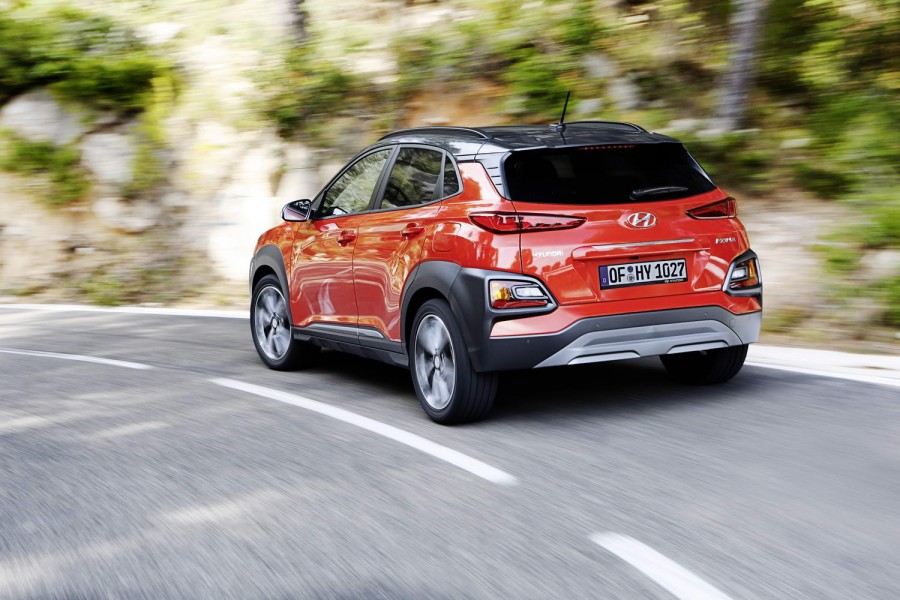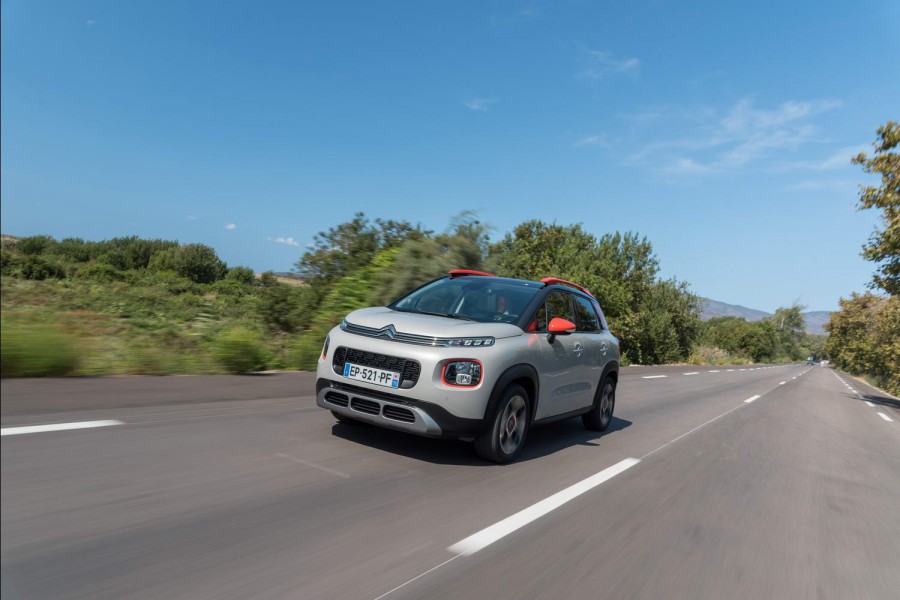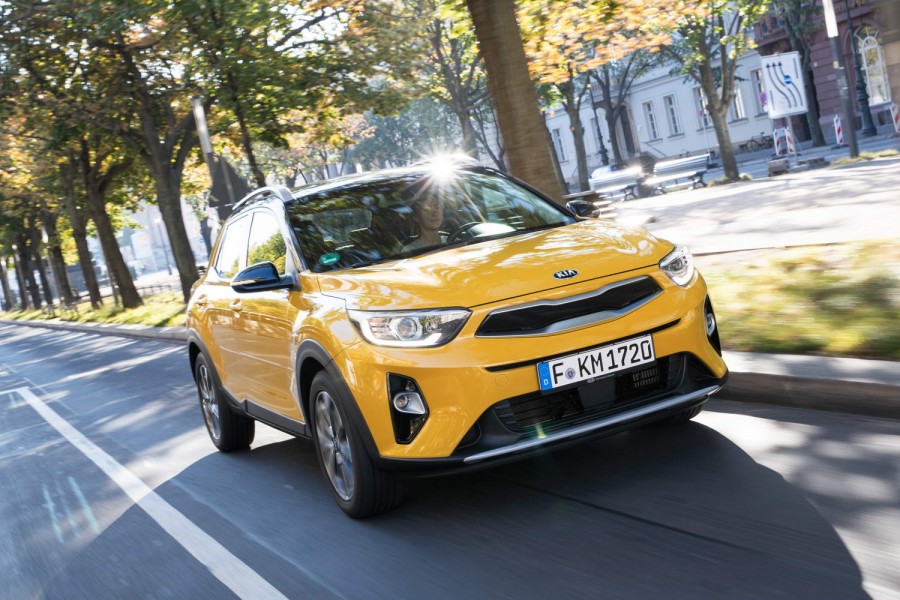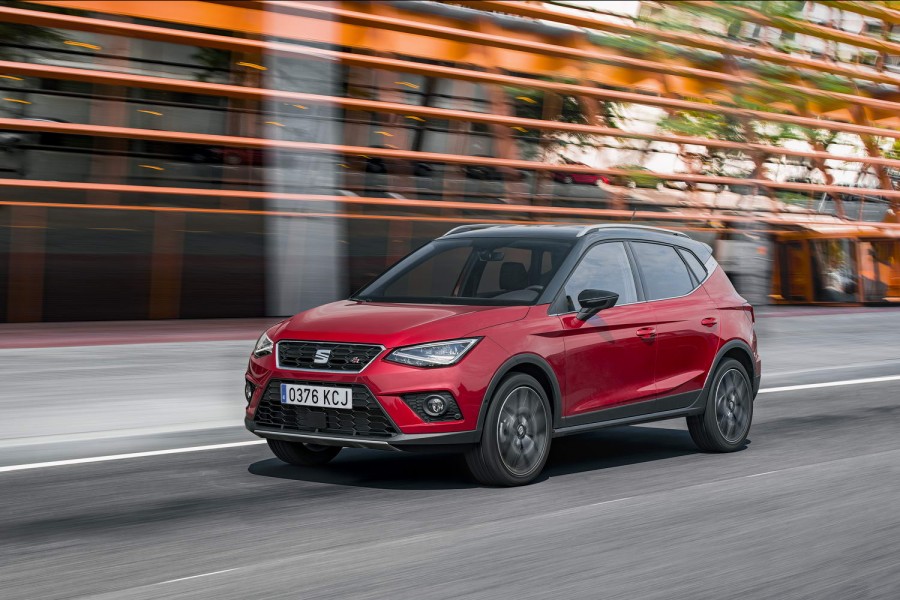Another day, yet another so-called B-SUV. This time it's Hyundai's turn to launch a funky crossover, the new Kona, designed to inject some youthfulness into the brand, offering buyers loads of personalisation in a rugged-looking shape that's fairly spacious too. Sitting below the best-selling Tucson, can the new entrant be another sales success for the Korean company?
In the metal
Now here's a car exterior worthy of discussion. We've yet to come across someone that actively loves the disjointed appearance of the new Hyundai Kona, but I will say this: it looks much better in real life, where you get an appreciation for the stance and subtle sculpting of the bodywork. There's no getting away from the oddness of the front light arrangement, though when the car is on the move during the day, you hardly notice the (all-LED) headlights, as the LED daytime running lamps grab your attention. As does the big radiator grille and rather unnecessary looking extra slot above it. Dark cladding ensures you know the Kona is an SUV, though look closer at the bodywork above that and you'll realise that it is more like a wide hatchback in reality. The upper rear lights I really like, but not really those lower down. There's no doubt about it: this car's design will divide opinion.
The interior is more conventional. Sure, you can colour-code it to the exterior by choosing a colour for the seatbelts, air vent surrounds, contrast stitching and more, but overall it's quite black and relatively conservative, in line with most of Hyundai's offerings. It's worth noting, too, that the Hyundai i30, for example, has more touchy-feely plastics than the Kona, which is a sign of the cutthroat segment it competes in more than anything else. Nonetheless, The Kona's cabin is modern and can be equipped with all the latest touchscreen infotainment and connectivity technology. It's decently spacious too, if not class-leading. Rear headroom is generous and four adults of average size will have no issues fitting comfortably in. A fifth will feel a little perched up high in the middle of the back seat, but that's to be expected. Unlike the Citroen C3 Aircross, the Kona's rear bench cannot slide to allow you prioritise boot space over legroom or vice versa, which is a shame. The seat back splits and folds flat with the boot floor, however, and at 361 litres that luggage space isn't top of the segment but it is of use.
Driving it
Buyers at this level of the market aren't expecting the dynamics of a hot hatch in their B-SUV crossovers, but neither do they want to put up with a sub-standard driving experience in return for a loftier driving position and some ruggedness. In short, these cars need to ride with composure over bumps and deal with poorly surfaced urban streets, while being nippy around town and in and out of multi-storey carparks and then cruise along the motorway in relative quietness. That could have been the brief for Hyundai's chassis engineers, as it describes the Kona to a tee.
Even on 18-inch alloy wheels, the ride comfort is good for the most part, only really picking up on transverse ridges and sharp-edged potholes at low speed. Larger bumps reveal mature damping that works well at higher speed on the motorway way too. And there you'll discover a composed and relaxed demeanour, with very little crosswind susceptibility, giving the driver confidence in the car. Take a sharp slip road off at speed and you'll discover good body control with no more lean than you'd expect in the best of the C-segment hatchbacks and plenty of mechanical grip. The steering is well-weighted and more consistent than in most current Hyundais and there's even some feedback through the wheel and chassis if you push on a little.
The vast majority of Konas sold in Ireland, of course, will be front-wheel drive, but Hyundai will offer it with four-wheel drive too and it's a shame it's likely to be too expensive for most, as it comes with a more sophisticated rear suspension set-up that, in conjunction with the rear axle traction, makes the Kona far more interesting to thread down an interesting piece of road. It helps, of course, that it comes with a feistier 1.6-litre petrol engine and a well-sorted seven-speed dual-clutch automatic transmission.
Most Irish buyers will stick with the entry-level 1.0-litre option. This is a turbocharged, direct-injection petrol unit that produces 120hp, plus 172Nm of torque from jut 1,500rpm. That latter stat reveals why it feels quite effortless to drive, even if you've left it in a higher gear than is ideal. The six-speed manual transmission is perfectly good, but you just don't need to stir it too much to make decent progress. The engine is quiet enough for the most part, with a distinctive three-cylinder warble when extended. In the dry, the front-wheel-drive chassis works well enough, easily finding traction, if never quite engaging you as the four-wheel-drive car can. But again, that's not what's important here. There are no obvious chinks in the car's dynamic armour from the perspective of its target buyer.
What you get for your money
Pricing for the Hyundai Kona crossover will start at a competitive €20,995 for the 1.0-litre model in Comfort specification. That comes with 16-inch alloy wheels, air conditioning, cruise control, roof rails, LED daytime running lights, Lane Keep Assist and more. It sits in Band A4 for taxation purposes. The 1.0-litre engine is also offered in Executive and Premium trim levels. The former adds 17-inch wheels, climate control, colour touchscreen infotainment, privacy glass, front fog lights, Android Auto and Apple CarPlay and a rear-view camera, for €22,995.
The Kona Premium starts at €25,995 and seriously enhances the specification, with niceties such as 18-inch alloy wheels, leather upholstery, Front Park Assist, Blind Spot Detection, Rear Cross Traffic Alert and cosmetic upgrades inside and out. This trim level is also available with a 1.6-litre petrol engine and dual-clutch automatic transmission for a total of €29,995.
Summary
There's lot to like about the Kona if you are happy with its unusual appearance, even if it doesn't really top the class in any one area. Refinement is good, it drives well, the 1.0-litre engine is a gem and there's above average space inside. Whether all that will be enough to further boost Hyundai's fortunes in Ireland will depend on demand for such vehicles. Hyundai has given its offering a good start with its competitive pricing and equipment count.








































